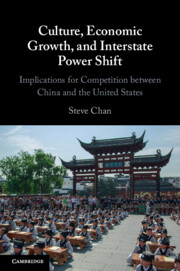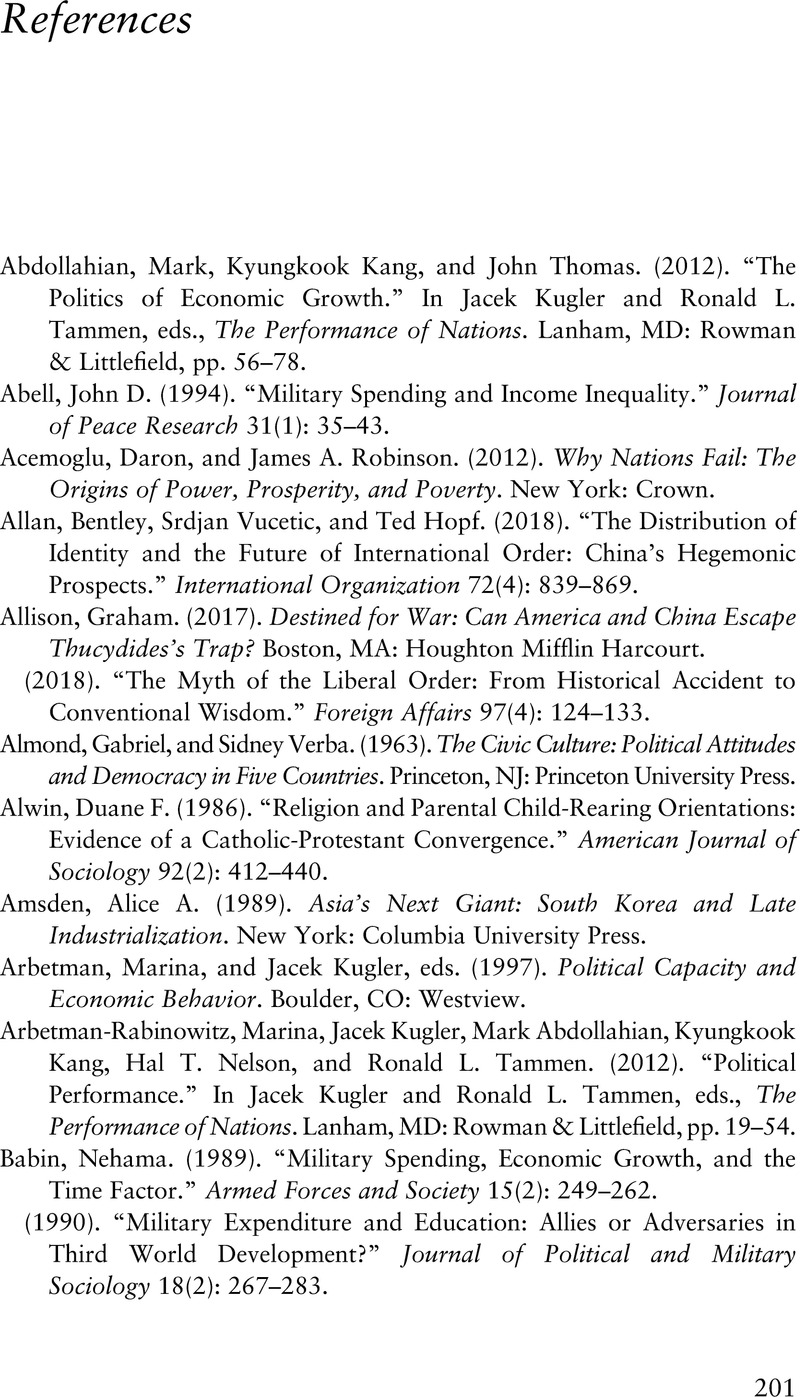 Culture, Economic Growth, and Interstate Power Shift
Culture, Economic Growth, and Interstate Power Shift Book contents
- Culture, Economic Growth, and Interstate Power Shift
- Reviews
- Culture, Economic Growth, and Interstate Power Shift
- Copyright page
- Contents
- Acknowledgments
- 1 Introduction
- 2 The Origins of Culture and Its Effects on Economic Development and Political Order
- 3 The Struggle between Materialist and Postmaterialist and China’s Economic Growth in Historical and Comparative Context
- 4 Economic Growth, Interstate Primacy, and Domestic Trade-offs
- 5 Innovation, Leading Sectors, and International Competitiveness
- 6 Conclusion
- References
- Index
- References
References
Published online by Cambridge University Press: 01 February 2024
- Culture, Economic Growth, and Interstate Power Shift
- Reviews
- Culture, Economic Growth, and Interstate Power Shift
- Copyright page
- Contents
- Acknowledgments
- 1 Introduction
- 2 The Origins of Culture and Its Effects on Economic Development and Political Order
- 3 The Struggle between Materialist and Postmaterialist and China’s Economic Growth in Historical and Comparative Context
- 4 Economic Growth, Interstate Primacy, and Domestic Trade-offs
- 5 Innovation, Leading Sectors, and International Competitiveness
- 6 Conclusion
- References
- Index
- References
Summary

- Type
- Chapter
- Information
- Culture, Economic Growth, and Interstate Power ShiftImplications for Competition between China and the United States, pp. 201 - 225Publisher: Cambridge University PressPrint publication year: 2024


